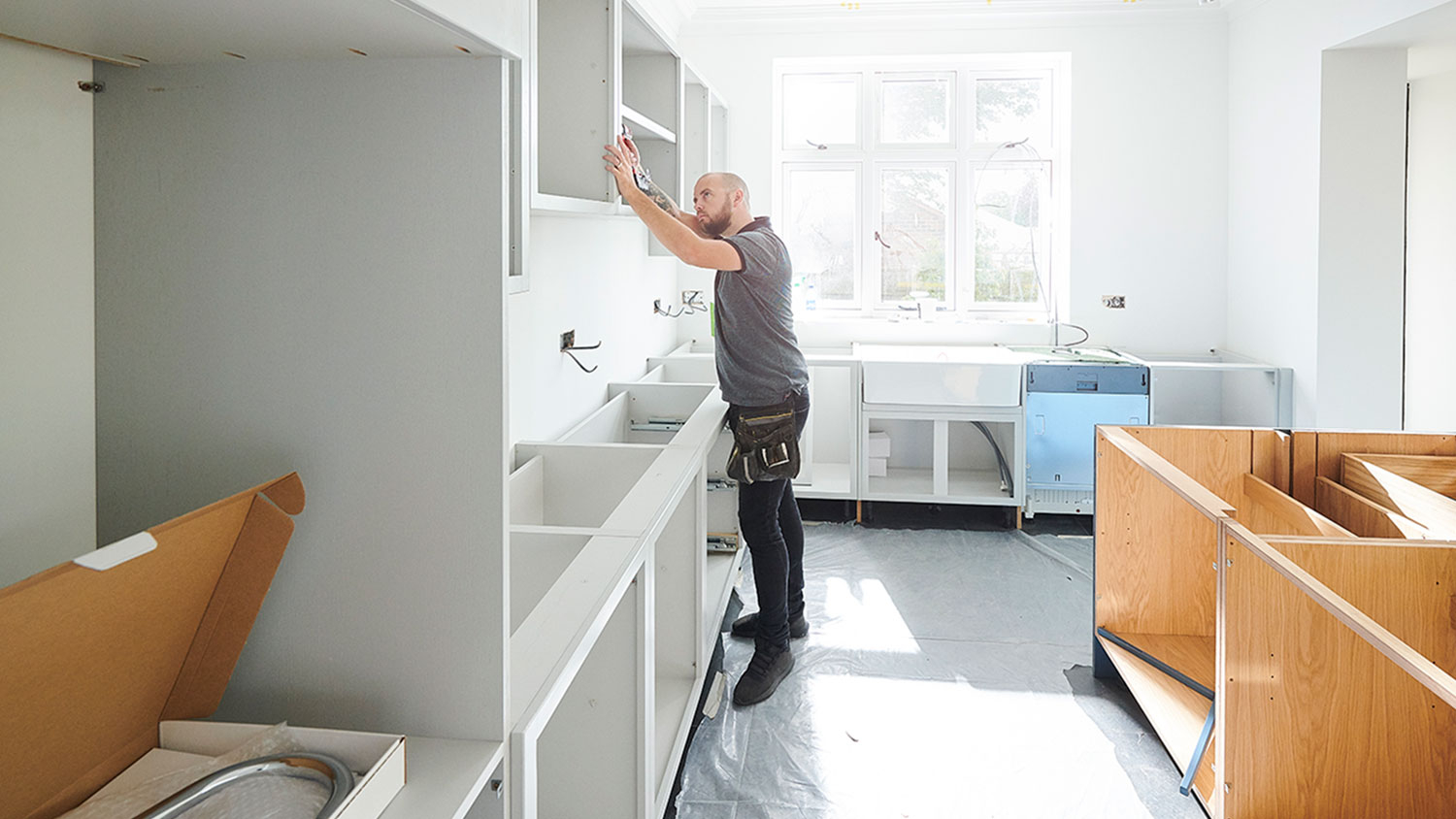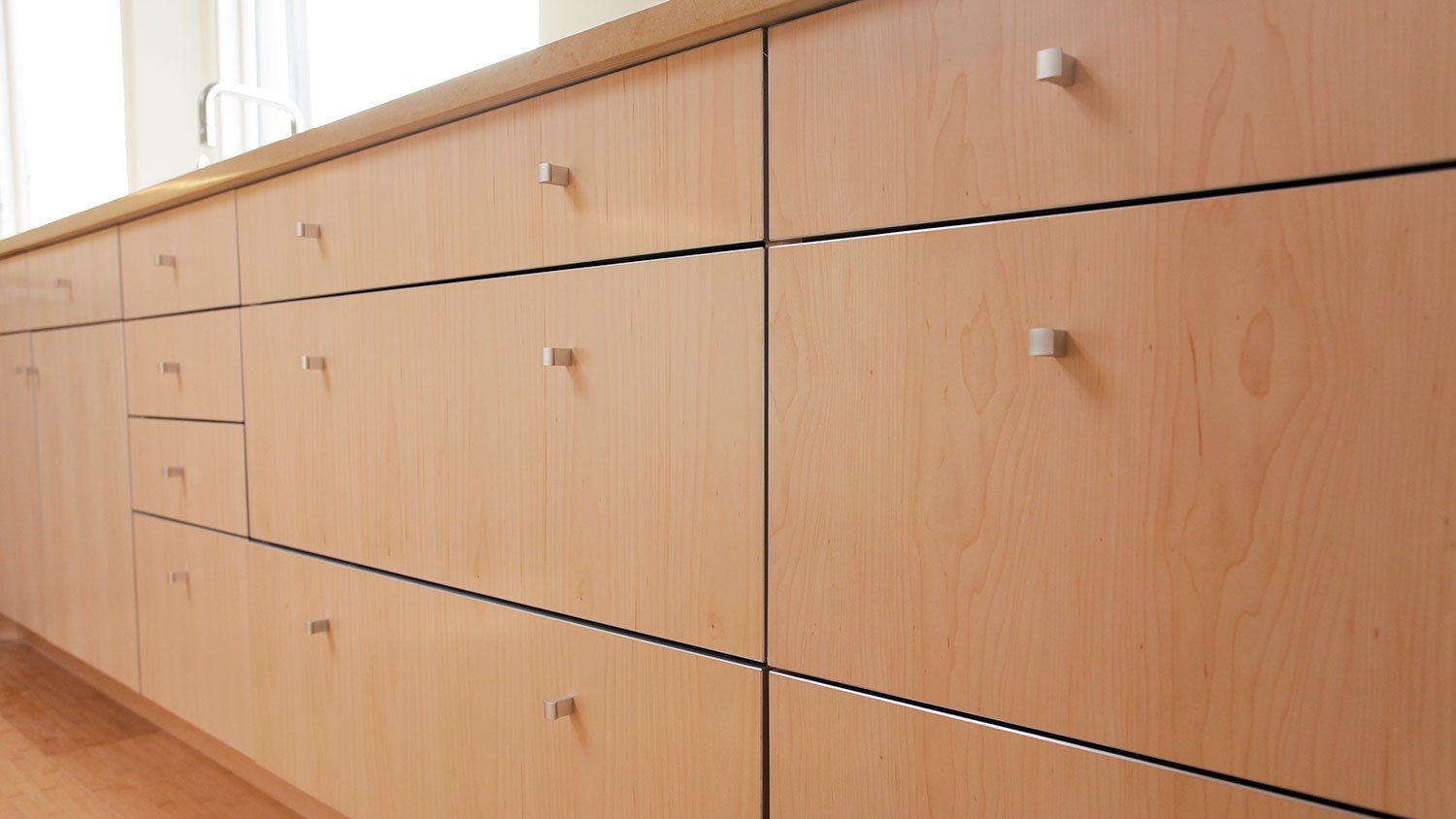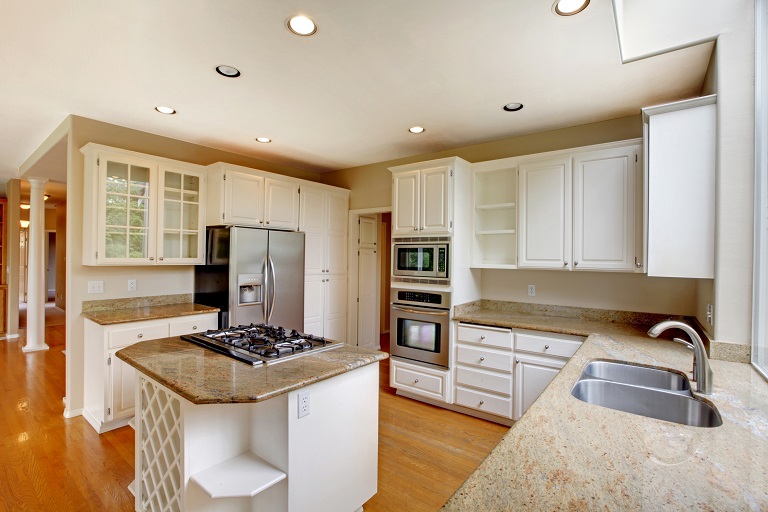
Discover cabinet installation cost estimates, including average prices, key cost factors, and tips to save on your new kitchen or bathroom cabinets.
Get a handle on your hardware placement with these tips


Paneled cabinets can have hardware centered vertically alongside the panel or the edge of the entire cabinet.
A good rule of thumb is to place hardware roughly one inch from the edge of the cabinet.
It’s helpful to mark potential positions with tape before installing hardware.
Use a level and measuring tape to ensure your hardware positioning is consistent throughout your cabinetry.
While they can seem like minor details in the grand scheme of your kitchen, knowing where to put knobs and handles on kitchen cabinets can make a big difference in the functionality and aesthetics of the space. On top of selecting hardware that complements your style, you’ll also want to install it in a position that is natural, accessible, and pleasing to the eye. Here are the key considerations and guidelines for where to install the knobs and handles on your kitchen cabinets.
There are two main types of kitchen cabinet hardware: knobs and pulls. It’s most common to use handles on upper cabinets, with knobs on drawers and base cabinets, but either way can work, depending on the setup.
In any case, there are tons of options to suit any budget, with the cost to install cabinet hardware ranging from as low as $100 to as high as $10,000. Where you place them will ultimately depend on the style and ergonomics of the hardware you choose, plus your personal preference.
Knobs are similar to doorknobs (on a smaller scale) and come in many different designs and materials. They’re easy to install since they only require one screw to affix them to a cabinet.
Bar pulls are slim bars that you attach to your cabinets. Like knobs, they come in more modern shapes like straight, slim bars or more traditional ones with curves and designs etched into them.
Cup pulls look like half-cups attached to your cabinets that you can slip your fingers underneath and pull out. These pulls provide a modern look on shaker cabinets or a farmhouse look on traditional cabinets.
Edge pulls, or tab pulls, don’t require any additional hardware because they’re affixed to the edges of the cabinets or carved out of the side. These are the most minimalist type of pulls since they have a low profile and blend in with the cabinets, so it looks like there’s no hardware at all.

Along with your kitchen cabinet color, the overall style of your cabinets is a major factor in deciding where to put knobs and handles on kitchen cabinets. Here’s where to put knobs and handles on kitchen cabinets for these common styles.
One of the most popular cabinet door styles, shaker doors have a clean, minimalistic design that features a flat, recessed center panel with square edges. With their simplistic design, shaker cabinets are versatile for traditional and modern kitchens.
For shaker cabinets, one option is to place hardware around two to three inches from the top or bottom of the cabinet and around one inch from the edge. It’s also common to center the hardware vertically and place it to the right of the panel, equidistant between the edge of the panel and the edge of the door.
A slab cabinet consists of a single flat panel with no raised or recessed elements. This simple and sleek style is especially suitable for modern decor, but it’s versatile enough for almost any setting.
If your cabinets feature slab-style doors, you have the flexibility to place a knob or pull anywhere within the top ⅓ to ¼ section of the door. Again, keeping hardware around one inch from the edge of the door is usually a good rule. Alternatively, you can opt for a centered placement of the hardware, or nearly any custom arrangement you can think of based on your preferences.
Beadboard doors have vertical grooves or beaded detailing on the center panel, creating a charming cottage-inspired aesthetic. The beadboard paneling can be applied to the entire cabinet door or used as an accent on a specific section, such as the center panel.
For beadboard cabinets, a good option is to position the hardware in the center of the beadboard panel vertically for a balanced and harmonious look. You can also place the hardware just below the beadboard panel, equidistant between the bottom of the panel and the bottom of the cabinet face.
Mullion doors have multiple small windows or glass inserts separated by wooden bars or mullions. They offer an elegant and ornamental touch, resembling the style of a traditional window. Glass panel cabinets can also come with a single insert of clear, frosted, or textured glass, adding a touch of visual interest while allowing you to display the dishware or other items within the cabinets.
A common approach is to vertically position the hardware in the center of each glass panel, creating a balanced and symmetrical look. If the cabinet has multiple intersecting mullions, you can also consider placing the hardware at the intersections to emphasize the architectural details and create a focal point. Similar to other paneled cabinets, another option is to position it just below the beadboard panel, at the midpoint between the bottom of the panel and the bottom of the cabinet face.
When it comes to placing hardware on drawer fronts, you have a few options. One approach is to place the hardware at the center of the drawer front both vertically and horizontally for a balanced, symmetrical look. You can also do top-centered placement, where the hardware is positioned at the upper center of the drawer front for a more contemporary feel. Generally, whenever a drawer has a raised or recessed panel rather than a flat surface, the most visually-pleasing solution is to perfectly center the hardware within the panel, while the most ergonomic is to place it above the panel near the top.
If your drawers are 24 inches wide or more, consider placing either two pulls or one long handle. When installing two pulls on a drawer, divide the drawer vertically into three even sections and place a pull in the center of the right and left sections.
Follow these additional tips for top-notch hardware placement.
No matter the position of cabinet hardware, a cardinal rule is to ensure you are consistently placing each knob and handle at the exact same location on the drawer or cabinet.
Always use a measuring tape and level to align the hardware consistently on all doors and drawers.
Mark your placement with a pencil before installing the hardware.
If you’re torn on the placement, it’s always a good idea to stick pieces of painter’s tape first to test out the look of different positions.
To ensure that the hardware is easily accessible and comfortable to use, test the placement by mimicking the motion of opening and closing the cabinets to see if it feels natural.
If you’re still uncertain, don’t hesitate to reach out to a local cabinet installation company for expert guidance and a result you’re sure to love.
From average costs to expert advice, get all the answers you need to get your job done.

Discover cabinet installation cost estimates, including average prices, key cost factors, and tips to save on your new kitchen or bathroom cabinets.

Choosing new cabinet hardware is a fun balance of practicality and design. Costs range between under $100 and up to five figures, though, so budgeting and knowing which materials you can afford is key. This cost guide breaks it all down.

Installing soft-close drawers is an affordable endeavor to improve the functionality of your cabinetry. Here’s how much soft-close drawers cost.

Discover built-in cabinets cost. Learn average prices, key cost factors, and tips to save on your custom built-in cabinetry project.

Thinking about adding toppers to your kitchen cabinets for additional storage space? Check out our guide with multiple ways to make it happen.

Getting stunning glass cabinets doesn’t have to be complicated. Use this guide for seamless cabinet door glass insert installation.